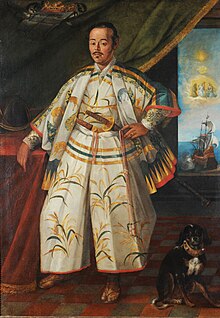
 Asia (/ˈeɪʒə/ AY-zhə, UK also /ˈeɪʃə/ AY-shə) is the largest continent in the world by both land area and population. It covers an area of more than 44 million square kilometers, about 30% of Earth's total land area and 8% of Earth's total surface area. The continent, which has long been home to the majority of the human population, was the site of many of the first civilizations. Its 4.7 billion people constitute roughly 60% of the world's population. Asia shares the landmass of Eurasia with Europe, and of Afro-Eurasia with both Europe and Africa. In general terms, it is bounded on the east by the Pacific Ocean, on the south by the Indian Ocean, and on the north by the Arctic Ocean. The border of Asia with Europe is a historical and cultural construct, as there is no clear physical and geographical separation between them. It is somewhat arbitrary and has moved since its first conception in classical antiquity. The division of Eurasia into two continents reflects East–West cultural, linguistic, and ethnic differences, some of which vary on a spectrum rather than with a sharp dividing line. A commonly accepted division places Asia to the east of the Suez Canal separating it from Africa; and to the east of the Turkish Straits, the Ural Mountains and Ural River, and to the south of the Caucasus Mountains and the Caspian and Black seas, separating it from Europe. China and India traded places as the largest economies in the world from 1 to 1800 CE. China was a major economic power for much of recorded history, with the highest GDP per capita until 1500. The Silk Road became the main east–west trading route in the Asian hinterlands while the Straits of Malacca stood as a major sea route. Asia has exhibited economic dynamism as well as robust population growth during the 20th century, but overall population growth has since fallen. Asia was the birthplace of most of the world's mainstream religions including Hinduism, Zoroastrianism, Judaism, Jainism, Buddhism, Confucianism, Taoism, Christianity, Islam, Sikhism, as well as many other religions. (Full article...) Featured articleThe Raid at Cabanatuan (Filipino: Pagsalakay sa Cabanatuan), also known as the Great Raid (Filipino: Ang Dakilang Pagsalakay), was a rescue of Allied prisoners of war (POWs) and civilians from a Japanese camp near Cabanatuan, Nueva Ecija, Philippines. On January 30, 1945, during World War II, United States Army Rangers, Alamo Scouts and Filipino guerrillas liberated more than 500 from the POW camp. After the surrender of tens of thousands of American troops during the Battle of Bataan, many were sent to the Cabanatuan prison camp after the Bataan Death March. The Japanese shifted most of the prisoners to other areas, leaving just over 500 American and other Allied POWs and civilians in the prison. Facing brutal conditions including disease, torture, and malnourishment, the prisoners feared they would be executed by their captors before the arrival of General Douglas MacArthur and his American forces returning to Luzon. In late January 1945, a plan was developed by Sixth Army leaders and Filipino guerrillas to send a small force to rescue the prisoners. A group of over 100 Rangers and scouts and 200 guerrillas traveled 30 miles (48 km) behind Japanese lines to reach the camp. (Full article...)Selected Country Uzbekistan, officially the Republic of Uzbekistan, is a doubly landlocked country located in Central Asia. It is surrounded by five countries: Kazakhstan to the north, Kyrgyzstan to the northeast, Tajikistan to the southeast, Afghanistan to the south, and Turkmenistan to the southwest, making it one of only two doubly landlocked countries on Earth, the other being Liechtenstein. Uzbekistan is part of the Turkic world, as well as a member of the Organization of Turkic States. Uzbek is the majority language, while Russian is widely spoken and understood. Islam is the predominant religion, and most Uzbeks are Sunni Muslims. The first recorded settlers in the land of what is modern Uzbekistan were Eastern Iranian nomads, known as Scythians, who founded kingdoms in Khwarazm, Bactria, and Sogdia in the 8th–6th centuries BC, as well as Fergana and Margiana in the 3rd century BC – 6th century AD. The area was incorporated into the Achaemenid Empire and, after a period of Greco-Bactrian rule, was ruled by the Parthian Empire and later by the Sasanian Empire, until the Muslim conquest of Persia in the seventh century. The early Muslim conquests and the subsequent Samanid Empire converted most of the people into adherents of Islam. During this period, cities began to grow rich from the Silk Road, and became a center of the Islamic Golden Age. The local Khwarazmian dynasty was destroyed by the Mongol invasion in the 13th century, leading to a dominance by Turkic peoples. Timur (Tamerlane) in the 14th century established the Timurid Empire. Its capital was Samarkand, which became a centre of science under the rule of Ulugh Beg, giving birth to the Timurid Renaissance. The territories of the Timurid dynasty were conquered by Uzbek Shaybanids in the 16th century. Conquests by Emperor Babur towards the east led to the foundation of the Mughal Empire in India. All of Central Asia was gradually incorporated into the Russian Empire during the 19th century, with Tashkent becoming the political center of Russian Turkestan. In 1924, national delimitation created the Uzbek Soviet Socialist Republic as a republic of the Soviet Union. It declared independence as the Republic of Uzbekistan in 1991. (Full article...)Featured biographyHasekura Rokuemon Tsunenaga (支倉 六右衛門 常長, 1571–1622) was a kirishitan Japanese samurai and retainer of Date Masamune, the daimyō of Sendai. He was of Japanese imperial descent with ancestral ties to Emperor Kanmu. Other names include Philip Francis Faxicura, Felipe Francisco Faxicura, and Philippus Franciscus Faxecura Rocuyemon in period European sources, as he took a baptismal name upon converting to Catholicism. In the years 1613 through 1620, Hasekura headed the Keichō Embassy (慶長使節), a diplomatic mission to Pope Paul V. He visited New Spain and various other ports-of-call in Europe on the way. On the return trip, Hasekura and his companions re-traced their route across New Spain in 1619, sailing from Acapulco for Manila, and then sailing north to Japan in 1620. (Full article...)General imagesThe following are images from various Asia-related articles on Wikipedia. Featured picture Credit: Luca Galuzzi The north face of Mount Everest, as seen from Tibet. Everest is the highest mountain on Earth, as measured by the height of its summit above sea level, which is 8,848 metres (29,029 ft). In 1865, Everest was given its official English name by the Royal Geographical Society upon recommendation of Andrew Waugh, the British Surveyor General of India at the time.
Did you know...
Updated: 6:33, 14 February 2024 In the news
Related portalsMajor Religions in Asia Middle East Central Asia and Surroundings Indian Subcontinent Southeast Asia East Asia Selected panorama
The Hajj is an annual Islamic pilgrimage to Mecca, Saudi Arabia, the holiest city for Muslims, and a mandatory religious duty for Muslims that must be carried out at least once in their lifetime by all adult Muslims who are physically and financially capable of undertaking the journey, and can support their family during their absence. TopicsCategoriesAssociated WikimediaThe following Wikimedia Foundation sister projects provide more on this subject:
More portalsShortcuts to this page: Asia portal • P:ASIA Purge server cache |





























































































